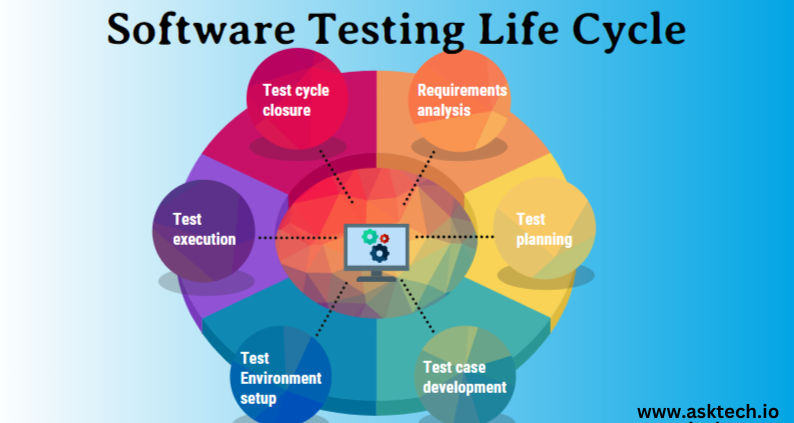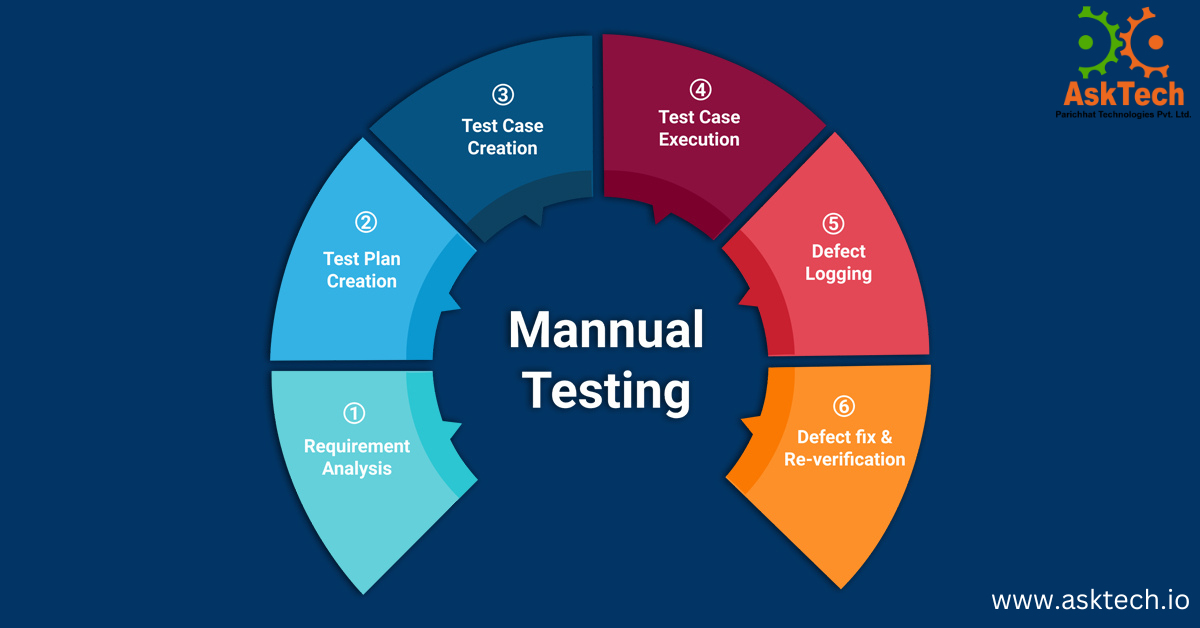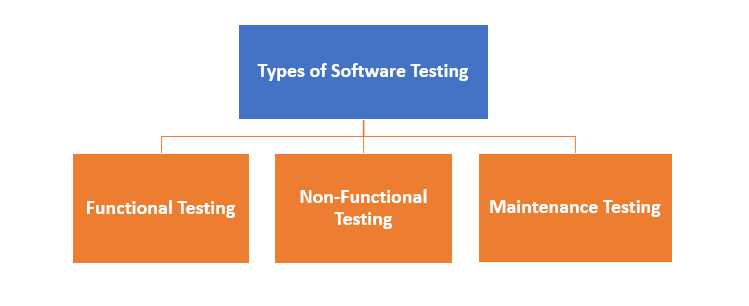In the realm of software development, the pursuit of excellence revolves around more than just coding. It’s about ensuring that the final product not only functions flawlessly but also delivers an exceptional user experience. This pursuit is precisely what brings us to the intriguing realm of software testing. In this detailed exploration, we’ll embark on a journey to understand what software testing is, why it’s indispensable, and how it works to guarantee the integrity and quality of the digital solutions we create.
What is Software Testing?
Testing software products means checking whether they meet expected requirements and ensuring that they do not contain bugs. Using manual or automated tools, one or more properties of interest are evaluated by executing software/system components. Software testing identifies errors, gaps, or missing requirements in contrast to actual requirements.
The software testing definition is sometimes referred to as a white box and black box test. Basically, Software Testing is the process of verifying the application under test (AUT). The objective of this Software Testing course is to introduce the audience to testing software and justify the importance of software testing.
During testing, you make sure the software behaves the way it’s supposed to, meets functional requirements, and performs reliably. It involves techniques, methodologies, and tools that help identify problems early in the development cycle, reducing costs and risks.
During software testing, errors are detected, performance is assessed, and functionalities are validated. The iterative process contributes to the creation of robust, user-friendly, and dependable software products, which are key to meeting customer expectations and keeping a competitive edge.
Why Software Testing is Important?

The importance of software testing in software development can’t be overstated:
Defects and bugs: Software testing identifies and fixes defects, bugs, and errors in the code. By detecting and addressing these issues early, you can prevent them from becoming critical problems that disrupt the user experience and result in costly fixes.
Quality assurance: Thorough testing ensures high quality software. This ensures that the software performs as expected, meets functional requirements, and offers a seamless user experience.
Maintaining Reliability: Trust must be built through reliable software. The software is rigorously tested to ensure that it performs consistently in different conditions, preventing crashes, data loss, and other disruptions.
Addressing defects early in development is more cost-effective than dealing with them afterward. The cost of fixing bugs in production is reduced by software testing.
Mitigation of risk: Unidentified software defects can result in severe consequences, such as security breaches and operational failures. In order to minimize these risks, testing is crucial in identifying vulnerabilities before they can be exploited.
Optimising Performance: Performance testing identifies bottlenecks, inefficiencies, and ways to improve software performance. As a result of this optimization, the software is more responsive and efficient.
Satisfaction of users: Well-tested software offers smooth and reliable operation. The more positive the user experience, the higher the customer loyalty and the more satisfied the user will be.
Providing high-quality software sets you apart from your competitors. Those who prefer reliable, user-friendly, and error-free software are more likely to choose it.
What is the need of Testing?
Software bugs can be costly or even dangerous, which is why testing is important. Software bugs can potentially cause monetary and human loss, and history is full of such examples.
- The Bloomberg terminal in London crashed in April 2015 due to a software glitch, affecting more than 300,000 traders. A 3 billion pound debt sale was postponed as a result of it.
- Over 1 million Nissan cars were recalled due to software failures in the airbag sensor detectors. Due to this software failure, two accidents have been reported.
- Due to a software failure in its POS system, Starbucks was forced to close about 60 percent of its stores in the U.S. and Canada. As a result of being unable to process the transaction, the store once served free coffee.
- A software glitch caused Amazon’s third-party retailers to see their products’ prices reduced to 1p. Heavy losses were incurred by them.
- There is a vulnerability in Windows 10. The win32k system contains a flaw that allows users to escape security sandboxes.
- The F-35 fighter plane was unable to detect targets correctly due to a software bug in 2015.
- A software bug caused China Airlines’ Airbus A300 to crash on April 26, 1994, killing 264 innocent people
- Three people died and three others were critically injured when the Therac-25 radiation therapy machine malfunctioned due to a software bug in 1985.
- The costliest accident in history occurred when a software bug caused a $1.2 billion military satellite launch to fail in April 1999
- A software bug credited 920 million US dollars to the bank accounts of 823 customers of a major U.S. bank in May 1996.
Testing in Software Engineering
According to ANSI/IEEE 1059, testing in software engineering is the process of evaluating a software product to see if it meets the requirements. As part of the testing process, the features of the software product are evaluated for requirements such as missing requirements, bugs, errors, security, reliability, and performance.
Types of Software Testing

The types of software testing are as follows:
Testing is typically divided into three categories.
- Functional Testing
- Testing that is not functional or performance-based
- Regression and maintenance (regression and maintenance)

Testing CategoryTypes of TestingFunctional Testing
- Unit Testing Integration TestingSmokeUAT ( User Acceptance Testing)LocalizationGlobalizationInteroperabilitySo on
-
PerformanceEnduranceLoadVolumeScalabilityUsabilitySo on
-
Regression Maintenance
It is not a complete list since there are over 150 types of testing. In addition, not all testing types are applicable to all projects, depending on their scope and nature. Here you can explore a variety of testing tools and find ones that suit your project needs.
Testing Strategies in Software Engineering
Software engineering strategies include:
In unit testing, the programmer tests each unit of the program. Developers can use it to determine whether individual code units are working properly.
A software integration test focuses on its design and construction. Check whether the integrated units work without errors.
The system testing method involves compiling and testing your software as a whole. Among others, this testing strategy examines functionality, security, and portability.
Program Testing
Software testing involves executing an actual software program to test its behaviour and find errors. In the case of a test case, it is necessary to analyze how the program responds to the test data in order to determine its behaviour. It is more likely that bugs will be found during a good program testing process.
Best practices for software testing
Software testing goes beyond running multiple tests. A streamlined process and a specific strategy are also required to conduct these tests methodically. Software best practices should always be followed in order to improve the performance and functionality of any application or product.
In order to ensure successful software testing projects, consider the following best practices:
- Security-focused testing should be incorporated. There is a constant evolution of security threats. Along with regular software testing, security-focused tests should be conducted to protect software products against digital threats. Organizations can evaluate software integrity from a security perspective by conducting penetration testing or ethical hacking.
- Engage users. Software developers should keep communication channels open with users since they are the best judges of a product. Conducting testing from the user’s perspective can be accomplished by asking open-ended questions such as what issues users encounter when using the product and what features they would like to see. A great way to incorporate their feedback for successful software testing is to create test accounts in production systems that simulate the user experience.
- Keep an eye on the future. Technology is constantly evolving, so any new product on the market needs to be scalable and adaptable. Developers should keep future and adaptability features in mind when developing a product. The architecture used and the way the software is coded can ensure this. Future-proof products should not only be tested for bugs and vulnerabilities, but also for scalability.
- Tests should not be written by programmers. Typically, tests are written before coding begins. For programmers, it’s best to avoid writing these tests, since they can be biased toward their code or miss other creative details.
- Make sure your reports are thorough. Reporting bugs should be as detailed as possible so the people responsible for fixing them can understand them easily. To be successful, a report should reflect the severity of issues, prioritize fixes, and include suggestions for preventing recurrences.
- Organize tests into smaller fractions. Smaller tests save time and resources, especially in environments where testing is frequent. Teams can make a more efficient analysis of each test by breaking it down into separate sub-tests, such as user interface testing, function testing, UX testing, and security testing.
- Automate two-tiered tests. In order to ensure that all bases are covered, organizations should make sure that software testing is a two-way process. It is a great idea to conduct quick sanity checks on each commit to the source code, followed by extensive regression testing during off-hours. Instead of backtracking for errors later, developers get immediate feedback on the current portion of code.
- You should not skip regression testing. It is essential to perform regression testing before an application enters the production phase, and it should not be skipped. The majority of the testing has been done before regression testing, which encourages the validation of the entire application.
At AskTech, we recognize that the future of software testing lies in a harmonious blend of manual and automated approaches. Our commitment to innovation drives us to harness the best of both worlds, continuously refining our testing processes to deliver software products that exceed expectations.
As you embark on your testing journey, remember that software testing is not just a process; it’s a mindset, a commitment to delivering software excellence. Whether manual or automated, testing serves as the beacon that guides us toward creating reliable, user-friendly, and high-performing digital solutions. Thank you for joining us on this exploration of software testing’s evolution, and here’s to a future where quality knows no bounds.
